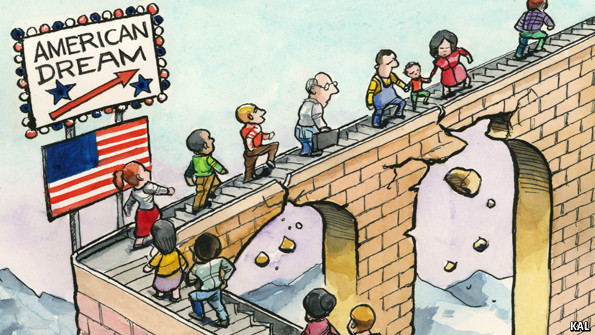It’s the American Dream: work hard, and you can achieve success and prosperity. But is this dream really achievable?

Many workers move to North America in hopes of achieving a prosperous life. But exactly how realistic is this ‘American Dream’?
In her blog post, Mariana Martinez-Rubio discusses the disadvantages faced by lower class entrants to the workforce in their search for internships. Often, internships are offered at very low rates or for no compensation at all. While the focus is on the student gaining work experience rather than making a living, looking at internship programs demonstrates an inherent disadvantage for those coming from lower class backgrounds. Those who already struggle to make a living simply cannot afford to work for free and can have trouble surviving on free or lowly paid internships. Thus, internships are often a luxury that only the privileged can afford.
The disadvantages faced by lower class students and workers do not stop at internships. If these people cannot participate in internships, they will be at a disadvantage in comparison to candidates with intern experience when entering the workforce. This demonstrates only one aspect of the classism prevalent in the workforce.
Other factors that prevent the lower class from achieving their potential is the cost of education and job training. While the wealthy can easily afford to attend post-secondary education or receive job training, low-income households find it very difficult to receive proper training. Scholarships and loans are offered, but students will still need to worry about keeping their grades and extracurricular involvement up to qualify for scholarships or making enough money to pay off their student loans. After struggling to receive an education, the lower class continue to face difficulty in finding work. Even if they do get an interview, they must be able to afford nice haircuts and professional clothing to appear presentable at interviews. The costs of gaining work training, experience and resources are an unfair barrier to the lower class, preventing them from breaking out of their current place in the class hierarchy and from achieving the so-called American Dream.
What can be done to help achieve equity among all prospective workers? Lowering the cost of education, making financial need-based scholarships more readily available, and placing less emphasis on the physical appearance of job applicants are examples of a few steps that can be taken to improve the situation. Through the provision of methods of empowerment for lower class workers, individuals can all have a fair opportunity to reach their potential and achieve success and prosperity.